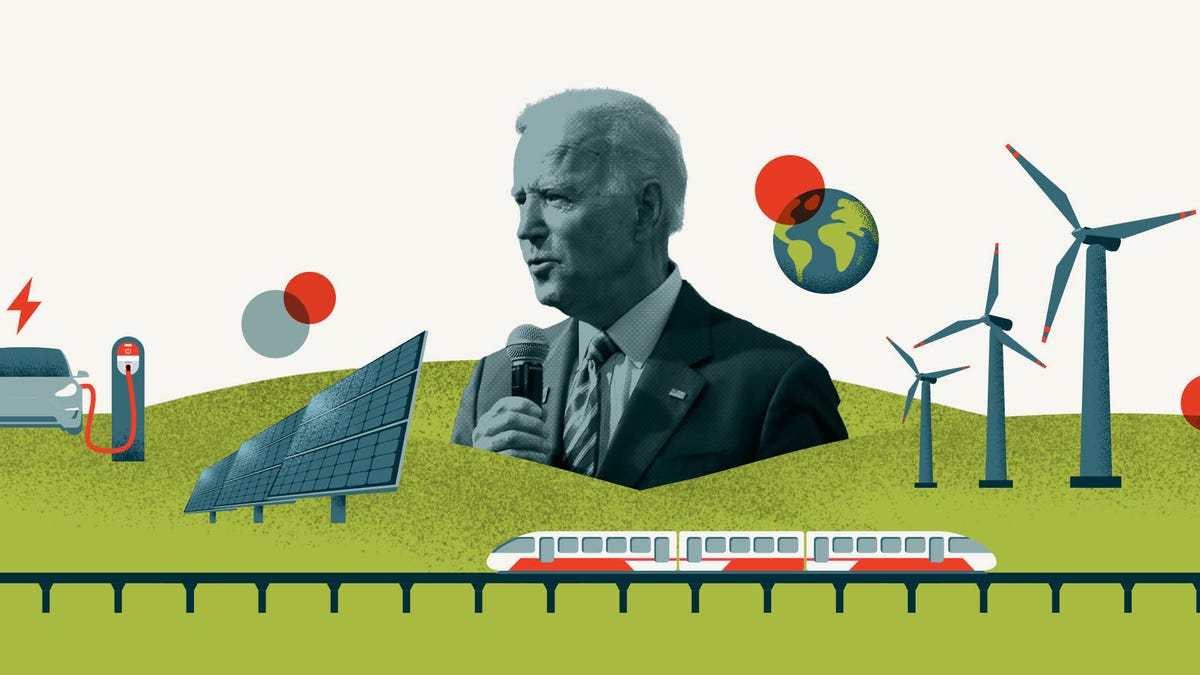
As he steps into office this week, President-elect Joe Biden brings an ambitious plan to address climate change, and with Democrats in control of Congress for the first time in a decade, he may have the opportunity to accomplish some of his loftiest goals.
“It’s enormous,” said Susan Glickman, Florida director of the Southern Alliance for Clean Energy, one of many climate advocates, scientists and concerned citizens looking forward with optimism.
Biden’s goals include carbon-free electricity by 2035, more wind and solar to get the nation to net-zero emissions and 100% clean energy by 2050. He also wants to upgrade millions of buildings and homes to be more energy efficient, plug abandoned oil and gas wells, reclaim mines and make environmental justice a key consideration.
The climate and energy plans don’t delve into specifics on how those goals might be achieved, and his transition team declined multiple requests to answer questions about the plans. Without those key details, people can only speculate on what could happen in the months to come.
USA TODAY Network reporters asked experts across the country for their insight on the potential impacts of Biden’s plans, from the anticipated boost to wind power in the Northeast to incentives for farmers in the Midwest and the aggressive clean energy measures already underway in California.
Several key things are lined up in Biden’s favor, the experts said.
For example, two major changes have occurred in the 10 years since President Barack Obama had a similar majority in Congress, said David Konisky, a professor at Indiana University's O'Neill School of Public and Environmental Affairs.
First, the climate problem has “taken on incredibly more urgency” as warming temperatures and rising seas create havoc and give scientists a better look at what’s to come, Konisky said. Second, the public is increasingly aware of climate change because of the excessive heat nationwide, wildfires in the West and more intense hurricanes along the Atlantic coast.
“That means there’s more pressure for President-elect Biden to do something,” he said.
Biden’s goals to curb greenhouse emissions may be helped by existing plans to phase out aging utility plants and reduce coal use, experts said.
While he aims to cut emissions with clean energy projects, his plans also support regenerative agriculture practices that could help farmers and sequester some of the burden from carbon dioxide emissions.
Other environmental advocates hope the administration will include ample protections for public and tribal lands as it works to expand wind and solar power projects.
Biden’s plan is expected to work in harmony with California, where the state’s governor already is trying to phase out fuel-driven cars and move forward on high speed rail. The new administration’s plan includes increasing the nation’s network of electric vehicle charging stations more than ten-fold and expanding light and high-speed rail.
While Biden emphasizes stimulating the economy and jobs by beefing up solar and wind capacity and shoring up roads, utilities and military bases, Republicans are likely to raise concerns about the costs of his ambitious plans.
It could help his agenda that some of the more conservative states, such as Texas and North Carolina, are leading the way in wind and solar, noted a recent story in Inside Climate News. That may help create more bipartisan support for things like renewable energy incentives in the COVID-19 relief package.
However, even with a super-majority for a time, Obama was never able to get a climate bill through Congress, and Biden’s margin will be even thinner, Konisky said. “That could make it even more difficult.”
Even though the public understands climate change better than it did a decade ago, the nation is no less polarized, he said, and does not yet have broad consensus about how the government should address it.
Konisky expects to see Biden pursue his goals in other ways across the spectrum, by embedding climate policies throughout much of what the administration attempts to do, including budgets and “a robust regulatory effort.”
Others expect to see the administration get creative in broadly implementing its policies.
If they are serious about climate mobilization, “it’s not just one agency, it’s the whole of government,” said Robert Kopp, a Rutgers University climate scientist and a lead author on the coming Sixth Assessment of the Intergovernmental Panel on Climate Change.
“What you have to do is take every mechanism we use to make decisions and integrate climate into it,” said Kopp. “Climate isn’t just some other bucket. It’s really part of everything. I think the (Biden) administration recognizes that and it’s reflected by their efforts.”
“With a supportive Congress, they can change laws, tax incentives and make the infrastructure investments needed to grow the clean energy economy.”
"plan" - Google News
January 18, 2021 at 06:02PM
https://ift.tt/2NfCIbP
Biden’s climate crusade: How his plan to cut carbon emissions, create jobs could impact U.S. - AZCentral.com
"plan" - Google News
https://ift.tt/2un5VYV
Shoes Man Tutorial
Pos News Update
Meme Update
Korean Entertainment News
Japan News Update
Bagikan Berita Ini














0 Response to "Biden’s climate crusade: How his plan to cut carbon emissions, create jobs could impact U.S. - AZCentral.com"
Post a Comment